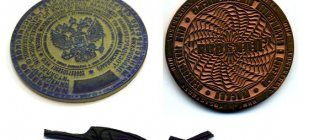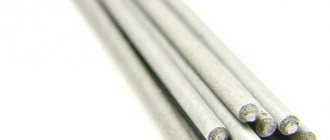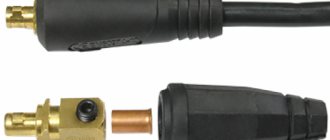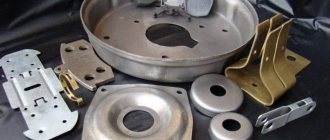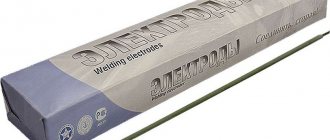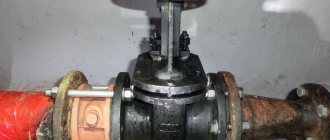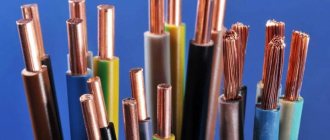Hot stamping process
The method consists in the fact that when high pressure is applied, the metal of a hot billet undergoes a series of successive deformations, and, without violating its integrity, flows into the free space of specially prepared dies, repeating their spatial shape and achieving the specified dimensions. Protrusions and depressions in the corresponding local areas of the die limit and direct the movement of the metal, bringing the configuration and dimensions of the blank closer to the parameters of the final product with each pass. During the last working pass, they form a closed single stream (cavity), coinciding with the configuration of the finished product.
Technological process of hot die forging
The term hot metal stamping indicates that the dimensions and geometry of the workpiece change not in one, but in two or three dimensions.
Hot stamping uses round or rectangular products as blanks, as well as hot-rolled sheets. Hot die forging is also carried out directly from the rod, if the configuration of the part is not very complex and one or two passes are sufficient. Subsequently, individual parts are cut off from the rod.
According to their shape, final forgings are divided into two main classes:
- Disc: flanges, covers, hubs, other round (rectangular) forgings with a length that is small relative to the diameter. Here the basic technological scheme for upsetting the end of the initial blank is selected.
- Elongated: levers, shafts, connecting rods and parts similar in configuration. The blank is placed flat on the die and is shaped into its final shape through several roughing and stamping operations. Before the final pass, molding is performed in streams and on rollers.
According to technological schemes, the two most commonly used ones are actively used:
- stamping in closed dies
- stamping in open dies
Hot die forging in closed dies is carried out in a die with a small gap between its halves. It is assumed that the volumes of the workpiece and the finished product are the same. This equipment is equipped with two separation surfaces located at a certain angle. The scheme is used in the production of parts that are relatively simple in shape and makes it possible to achieve the greatest homogeneity of the internal structure of the part and less roughness.
When using the hot die forging scheme in open dies, there is no exact correspondence of volumes between the workpiece and the final product; an active redistribution of the metal mass between the parts of the forging occurs. Part of the metal is squeezed out of the stamp into a special groove and is called a flash. The scheme makes it possible to stamp parts of almost any configuration, since it allows for a large number of roughing and finishing passes with intermediate turning of the blank.
Horizontal forging machines
Horizontal forging machines (HFO) produce stamping of forgings without flash and stamping slopes in split dies. When stamping from a rod, there is no need for preliminary cutting of the latter into dimensional blanks, since the GKM stamps have a cutting groove. The machine has a rigid structure, which increases the accuracy of forgings.
The GKM drive (Fig. 6) is carried out from an electric motor 9, which, through a V-belt drive 8, accelerates a flywheel with a friction clutch 10. The side slider is set into reciprocating motion by a cam 3 mounted on the shaft 4. When the slider 2 moves, the system of levers 1 sets in motion clamping slide 17 with a movable matrix 16, which presses the workpiece 15 to the stationary matrix 14 for the period of upsetting with a punch 12. The original workpiece-rod is advanced before stamping to the retractable stop 13. The clutch 10 is engaged, and the movement through the gears 7 is transmitted to the crankshaft 4, which through connecting rod 5 provides reciprocating movement of the main slider 11 with the punch 12.
When clutch 10 is disconnected, brake 6 is activated, stopping the crankshaft in the desired position.
Rice. 6. Horizontal forging machine : a - kinematic diagram; b - appearance.
GKM are produced with a force of 500. . .31 500 kN. They can be used to stamp forgings from round bars with a diameter of 20 to 270 mm.
Screw friction presses are designed for stamping small and medium-sized forgings in open and closed dies, chasing and straightening forgings. They are built with a nominal force of 400. . .630 kN, slider stroke length 240. . .600 mm and a number of strokes of 39-11 per minute. The deformation speed during stamping is 0.3. . . 0.5 m/s.
Rice. 7. Screw friction press
A general view of a friction screw press of a traditional design is shown in Fig. 7, a. From the electric motor 1, through a belt drive 2, a shaft with friction discs 3 attached to it rotates. By pressing the control handle 10 through a system of rods and levers, the shaft with rotating discs 3 can be moved along the axis and, thus, alternately bring the discs to the right or left to the flywheel 4 In this case, due to friction forces, rotation from the disks is transmitted to the flywheel mounted on the screw spindle 5. The latter, rotating in a fixed nut 6 in one direction or another, lowers or raises the slider 8 in the guides 12. The spindle 5 rotates relative to the slider 8 in bearing support. The dies are fixed on the table 11 and the slider 8. Before hitting the workpiece, the disk is automatically moved away from the flywheel, since a special protrusion 7 on the slider acts on the cam 9 attached to the rod and moves it down. After the impact, the lifting disk is pressed against the flywheel 4. The slider is raised using the rebound from the impact.
In the upper position of the slider, the discs do not touch the flywheel and the slider is held by a shoe brake mounted at the bottom of the spindle.
Slipping of the flywheel over the disc is a disadvantage of friction presses. Therefore, there are press designs where the flywheel is replaced by an electric motor rotor and a corresponding braking system (Fig. 7, b). When the stator windings 2 are turned on, the rotor 1 with the screw 4 rotates by electromagnetic forces in the bearings of the frame 3. The screw is fixed in the axial direction, therefore, when it rotates, the fixed nut 5 moves up and down together with the slider 6, rigidly connected to the nut and moving in the guides of the frame together with ejector 7 of the lower stamp. Such a press is called an electric screw press. There are also hydraulic screw presses, in which the rotation of the screw is carried out by supplying liquid under pressure.
Presses of modern design have:
- device for programming the energy of series of impacts;
- upper and lower ejectors;
- scale blowing device;
- device for mechanized installation and removal of dies;
- device for loading blanks into the working area of the press;
- device for removing stamped products;
- a device for orienting heated workpieces and automatically feeding them to the loading device;
- programmable command device;
- inertial switching mechanism.
Advantages and disadvantages of the process
Hot stamping has the following advantages:
- Manufacturing of forgings of very complex shapes.
- Reduced material losses.
- Reduced specific labor intensity.
- There is no need for highly qualified stampers.
- Accuracy of dimensions and configuration.
The disadvantages of the hot die forging method include
- Complexity of operations
- Significant energy intensity
- Significant cost and labor intensity of design and manufacture of equipment. The stamp must be made from high-quality materials, and it is applicable only to this product.
- The need to use more force than forging
- The weight limit of the finished product is up to 3-4 tons.
Advantages and disadvantages
In general, it makes sense to use hot die forging for the production of medium and large series, and also if the complexity of the shape and thickness of the part do not allow the use of cold molding.
The technological process of hot die forging covers many preparatory and working operations, from the receipt of material to the receipt of the final product.
Hot stamping scheme
Technology development includes the following stages:
- The hot stamping scheme is determined - in open dies or closed, and design documentation is issued.
- Process transitions are determined, and the dimensions of the blank are set taking into account tolerances.
- Based on the required force of hot die forging, equipment (press, hammer, etc.) is selected.
- Dies are designed.
- The heating method and temperature-time regime for each operation are set.
- Finishing and finishing operations are determined.
- The technical and economic characteristics of the designed technical process are determined.
Hot die forging requires technologists, designers and shop personnel to have in-depth knowledge of materials science and extensive practical experience in working with this process.
The hot die forging process itself is divided into the following stages:
- Cutting rolled products into blanks,
- Bringing workpieces to operating temperature
- Stamping operations
- Removing flash
- Shape correction (if necessary)
- Heat treatment
- Descaling
- Calibration
- Reception by technical control service.
Lubricant for the hot stamping process
Before submitting to the stamp, the blanks must be heated completely and evenly. In modern enterprises, this process is controlled by automation, ensuring a given temperature increase schedule, uniform heating of all workpieces throughout their entire volume and eliminating the formation of oxide films and zones of low carbon content. The following are used as heaters:
- electrical contact installations. Heating is carried out by connecting the blank to an electrical circuit and passing a strong current through it.
- induction systems. Heating is produced by eddy currents excited in the surface layer of the workpiece;
- gas ovens. The temperature rise takes place in a chamber isolated from the atmosphere, filled with an inert gas, which prevents the formation of scale.
Removing flash and punching films is used in the case of an open hot stamping scheme. In this case, special cutting and punching dies and crank presses are used.
Sometimes, during the removal of products from the stamp, cutting off the flash, or heat treatment, the axes of the product are bent or the cross sections are disrupted. Then a shape correction operation, or editing, is applied. Large workpieces or those made from high-quality steels are straightened while hot. The operation is carried out in a clean stream after removing the flash. Sometimes the editing operation is combined with trimming. Small-sized products are adjusted using screw presses after heat treatment and cooling are completed.
Heat treatment in hot die forging
Heat treatment is carried out in order to bring the physical properties of products to the specified parameters and to facilitate final processing. The operation also allows you to remove residual stresses, reduce grain size, increase viscosity and plasticity.
Volume stamping
To simplify control operations, ensure precise positioning of the blank and reduce tool wear at the machining stage, products are cleaned of scale. Shot blasting systems are used for this purpose. In an insulated forging chamber, air under high pressure accelerates steel shot and directs it to moving products on a conveyor. Numerous impacts knock down films and flakes of oxides in the surface, giving it a matte appearance and at the same time compacting the surface layer. For small products, another installation is used - a tumbling drum. In it, a large number of parts are poured together with metal balls or stars added to them. Due to numerous collisions of parts, scale is knocked off them.
Sometimes another transition is added to the sequence - calibration. It is carried out in order to avoid finishing processing, leaving only grinding. By means of planar calibration, vertical dimensional accuracy is achieved. Volumetric calibration serves to adjust dimensions in several directions, while also allowing for a reduction in roughness. For calibration, special dies with particularly precise grooves that repeat the configuration of the forging are used.
Subtleties of stamp making
Special strand molds for stamping are operated at elevated stresses and high temperatures. Naturally, this causes their rapid wear due to a decrease in the initial durability, which is understood as the number of forgings produced by the die before it fails. The level of mold resistance for a GS depends on the grade of steel used to make the die, the quality of its finishing and design, and the complexity of the grooves.
The raw materials for the production of dies are usually high-alloy steels (5ХНТ, 5ХНВ). Molds made from them do not wear out for a long time, as they have high strength and undergo special mechanical processing on milling, planing and lathes.
Dies are made according to a rather complex scheme, which includes performing a number of labor-intensive operations:
- castings or forgings – preparation of the workpiece;
- processing on metal-cutting equipment - increasing strength characteristics;
- hardening (heat treatment at a certain temperature) and tempering;
- fine-tuning
Dies for working on GKM and GKShP, as well as on hammers, are made of two parts, each of which has streams. When they come into contact, they form a cavity identical to the shape of the part being manufactured. The lower part of the stamp is mounted in a stationary press mechanism or in a special holder, the upper part is installed in the headstock of the stamping unit.
Stamp for working on GKM and GKShP
Complex products are produced in multi-strand forms. If the streams in them are made deep, it is necessary to treat them with fuel oil, which, when evaporated during the stamping operation, forms a gas mixture. It expands and makes the procedure for removing the finished product from the stream much easier and faster.
Billets for HS are heated in different types of furnaces - gas, coal, electric and oil. At the same time, they always strive to ensure that oxidation does not occur on the surface of the molds (scale does not appear). At some modern enterprises, stamping blanks are heated in high-frequency units. Such installations eliminate the possibility of overburning products, allow for complete automation of the heating operation and prevent the development of oxidative processes.
Stamping streams and their types
For simple product configurations, hot die forging is performed in a single pass.
Stamping streams and their types
If you have to stamp an intricate product with differences in thickness and height, protrusions and bends, production is carried out in several passes, in each of which the molding is done by a separate depression on the stamp - a stream. They are divided into two types:
Procurement
They are used for shaping, bringing the blank material to a spatial configuration that allows hot die forging operations to be carried out with minimal loss of material.
Procurement streams
Types of harvesting streams:
- Drawing - stretches certain parts of the blank, narrowing their cross-section. A series of gentle blows is used with the blank turned over
- Taxable - thickens the cross-section of the blank, “driving” material from neighboring areas to this place. A series of gentle blows with turning the blank over is also used.
- Pinch - flattens the blank at the point of application, causing an increase in the local width. 1-3 strong blows are used,
- Bending – used for parts with a curved axis
- Sedimentary - used for products close to round shape. Reduces the height of the blank, achieving the desired height and radius
Stamping
They are used in final molding and come in roughing and finishing.
Roughing is used for products with complex configurations and to reduce finishing wear. Designed to bring the dimensions and configuration of the blank closer to the final product. It is deeper and narrower than the finishing stream, and has larger radii and slopes. These measures are used to freely place the blank in the finishing stream.
Stamping streams
The finishing stream is used for molding the final product and is manufactured with an allowance for shrinkage during cooling. It is installed in the middle of the die, since the pressure and stress generated during finishing stamping are maximum. To drain the extruded metal, a flash groove is located around the stream.
Stamping schemes
The specific configuration of hot die forging is selected by an experienced technologist, taking into account the following parameters:
- Part dimensions.
- Material.
- Form.
- Available equipment.
- Limits on labor intensity and material costs.
Currently, two main hot stamping schemes are used:
- with open stamp;
- with closed stamp.
Stamping in a closed die is carried out with a small gap between its halves. It is assumed that the volumes of the blank and the final part exactly match. Sometimes two adjoining lines are made, located at an angle to each other. The scheme is used for molding forgings with relatively simple configurations and makes it possible to achieve the greatest homogeneity of the internal structure of the part and less roughness.
Scheme of stamping in closed dies
When using the hot die forging scheme in open dies, there is no correspondence between the volumes of the blank and the final product, and an active redistribution of the metal mass between its parts occurs. Some of the metal is squeezed out of the die into a groove adapted for this purpose and is called flash. The scheme allows you to stamp parts of almost any configuration, since it allows you to carry out a large number of roughing and finishing passes with intermediate turns of the blank.
Hot stamping with hammers
The technology uses the phenomenon of converting the kinetic energy of a falling massive hammer into the energy of impact deformation of the workpiece. Hammers are raised to their original state by compressed air or steam and have a mass of 0.5 to 25 tons.
Hot stamping with hammers
By changing the height of the hammer, you can adjust the impact force. The stroke of the hammer is also adjustable, this makes it possible to rotate the workpiece during the next lifting of the hammer and more accurate stamping. All preparatory operations are available, including broaching and rolling.
The accuracy of manufacturing parts using hammers leaves much to be desired, which is explained by the inevitable shift of parts of the die relative to each other at the moment of impact. Tolerances when using hammers have to be given large, and to ensure the possibility of removing products from the press, large stamping slopes are made.
Hot stamping on presses
Hot stamping of metal is also carried out on crank presses. The main characteristic of the equipment is the force it develops, varying from 6 to 110 MN.
Hot stamping on presses
The design of the crank hot stamping press has a rigid drive and does not make it possible to regulate the press stroke and its force. These factors exclude broaching and rolling from the list of permissible operations, since they require gradually increasing pressure.
The absence of impacts, the constant stroke of the die and the use of guides eliminates shifting, which makes it possible to achieve precision processing that is fundamentally unattainable with hammers.
Accordingly, it is possible to set significantly smaller tolerances, stamping radii and slopes, which reduces material losses and increases equipment productivity.
In addition, static deformation penetrates deeper into the blank than dynamic deformation, and this makes materials with low ductility accessible for processing.
The negative features of crank hot stamping presses are:
- scale is pressed into the surface; to combat this, heating in an inert atmosphere or deep cleaning of the blank is used;
- Due to prolonged contact with the punch, the blank cools down, its ductility and fillability decrease.
Recommendations from the experts
When pressure is applied to the workpiece, excess metal is forced into the die connector in the form of a flash (burr). The flash prevents the metal from leaving the die cavity, thereby forcing it to fill the entire volume of the stream cavity.
At final deformation, excess metal is squeezed out into a burr. Thus, there are no high requirements for workpieces in terms of weight. At the final stage of the process, the burr must be removed as it is considered waste. Open type dies are used for forgings of any type.
The advantages of closed stamping are the absence of flash, but as a result, metal consumption is reduced, finished products have a more uniform internal structure and the least roughness of the outer surface.
In the production of parts made of low-plasticity metals, the processing of which is carried out under the influence of all-round compression, this point is important.
When hot stamping of metal, the stamp is subjected to high loads - thermal and mechanical. The service life of the dies in this case is short - from 3 to 10 thousand forgings.
Therefore, the hot stamping method is economically beneficial only in mass or serial production of large batches of parts, since the stamp is a rather expensive tool. It is only suitable for the manufacture of the forging for which it is specially designed. This is its significant difference from the universal open-die forging tool.
